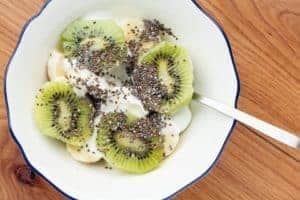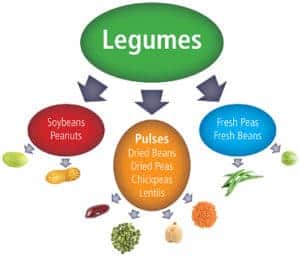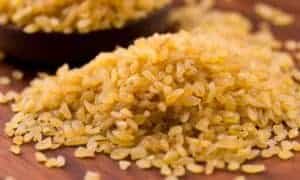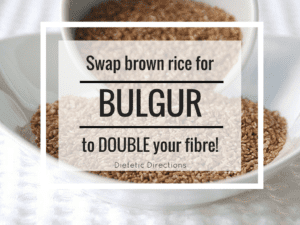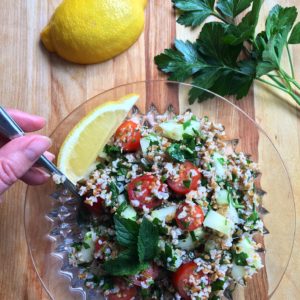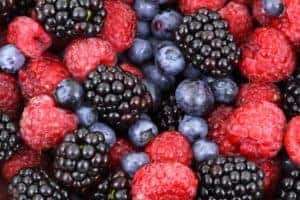
5 Foods to Help Constipation
How’s your bowel regularity? This is an awkward question for many, but a common conversation in a dietitian consultation. After all, the foods we eat have a major impact on our bowel movements. Today, I will be sharing 5 foods that help constipation.
Before we get “moving”, constipation means having three or fewer bowel movements per week. You may find yourself straining or passing hard, small, dry stools. It affects 1 in 5 people, with a prevalence higher among the elderly (Clin Interv Aging, 2015).
‘Non-Diet’ Reasons for Constipation
First, it’s vital to discover the underlying cause of constipation. This way, you’ll have the most appropriate dietary and/or lifestyle or medical treatment. Please note, the food recommendations in this blog may not be suitable depending on your underlying cause of constipation.
Reasons may include:
- Irritable bowel syndrome (IBS) or Inflammatory Bowel Disease (IBD) often causes constipation, or diarrhea or a mix of both. Speak with a dietitian for dietary support with Low FODMAP diet to help with treating IBS symptoms
- Taking constipating medication/supplements (ie., diuretics, antidepressants, antacids, iron supplements, etc.)
- Conditions such as: Parkinson’s disease, celiac disease, Spinal cord injury, stroke, hypothyroidism
- Lack of exercise
- Over-use of laxatives
- Sporadic access to bathroom or tendency to “hold it” to use facilities
5 Foods to Help Constipation
-
Bran Cereal
Holy fibre! Bran cereal is a very high source of “insoluble fibre”, which is effective for constipation relief for many.
Insoluble fibre is a type of fibre that remains unchanged all the way to the colon. This means your stools are heavier and softer, allowing them to pass more easily.
Nutrition Info:
- Wheat Bran
- The outer layer of the wheat kernel
- 12 grams of fibre per ½ cup serving (almost half of dietary requirement)
- All Bran Buds
- 11 grams of fibre per 1/3 cup serving
- Fibre 1 Crunchy Original
- 15 grams of fibre per ½ cup serving
- All Bran Original
- 12 grams of fibre per ½ cup serving
Ways to Include Bran in Diet:
- Choose a very high fibre cereal (> 8 grams of fibre per serving) that contains “wheat bran”
- Mix a small portion of your very high fibre cereal with your regular cereal
- Sprinkle bran in trail mixes or yogurt parfaits
- Add wheat bran to hot or cold cereals, smoothies, casseroles
- Replace some of the flour with wheat bran when baking muffins, waffles, dinner rolls, etc.
-
Chia Seeds
These little super seeds are loaded with fibre to keep those bowels moving. They also help you feeling full for longer, lower cholesterol and help to control blood sugars too. Chia seeds have a mild, nutty flavour and can be purchased at your local bulk food store. Read more about chia seeds here and how they compare to flax and hemp seeds (here)
Nutrition Info:
- 3 tablespoons of chia seeds has 12 grams of fibre
Ways to Include Chia Seeds in Diet:
- Sprinkle on top of hot/cold cereal
- Add to yogurts or salads
- Add to smoothies
- Substitute ¼ of the flour for ground chia flour when making homemade muffins, bread or pancakes
- Use to thicken puddings, sauces or dips
-
Beans, Peas and Lentils
Legumes are plants with seeds in pods. They include beans, peas, lentils, peanuts and soybeans. They are very high sources of dietary fibre and support bowel regularity and heart health.
Click to tweet: Discover how much #fibre is packed in #legumes (beans, peas, lentils)
Nutrition Info:
- Approximately 8 grams of fibre per ½ cup of lentils, black beans, edamame
- 14 grams of fibre in 1 cup of baked beans
- 12 grams of fibre in 1 cup of chickpeas
- 8 grams of fibre in 1 cup of green beans
- 3 grams of fibre in ¼ cup of peanuts
Ways to Include Legumes in diet:
- Add to sauces, soups or chili dishes to boost nutrition
- Mix with quinoa salads to boost fibre and protein (recipe inspiration)
- Make bean salads for lunches (recipe)
- Greek lentil salad or Garlicky Breakfast Lentils
- Use legumes as replacement (or in addition) to meat for more plant-based eating
-
Bulgur
Bulgur is made from whole wheat kernels that have been cracked and partially pre-cooked to speed up the cooking time. Bulgur packs a nutty flavour.
Tried bulgur? Discover the nutrition & how to include in your diet Click To TweetNutrition Info:
- 4 grams of fibre per ½ cup serving
- More than twice the fibre of brown rice
Ways to Include Bulgur in diet:
- Use as a quinoa or rice substitute
- Paired with many other foods such as stir-fries, curry dishes, or fish.
- Traditionally used in tabbouleh salad, (recipe)
-
Fibre-Rich Fruits
Include vitamin and fibre-rich fruits in your diet. Again, it’s not only the fibre but the potassium, magnesium, vitamin C and other nutrients that add to health benefits.
How much #fibre is in the fruit you're eating? Click To TweetNutrition Info:
- 8 grams of fibre per 1 cup of blackberries
- 6 grams of fibre in a pear
- Raspberries have 4 grams of fibre per ½ cup serving
- 7 grams of fibre per half of avocado
- 3 grams of fibre in a medium peach
Ways to Include High Fibre Fruit in Diet:
- Add fibre-rich fruits to hot or cold cereal
- Add to yogurt parfait or smoothies
- Add to salads, (recipe ideas)
- Eat on their own (YUM!)
Bottom Line:
Eating high (insoluble) fibre foods may help in preventing (or treating) constipation. Foods that are high in fibre such as bran, chia, legumes, bulgur and fruits are part of a healthy diet and contribute to decreased risk of heart disease, high blood pressure and diabetes. High fibre foods also help with weight management since they are slow to digest and fill you up for longer.
Next time someone asks you about your bowels, remember that optimum health includes good bowel regularity! If you are experiencing constipation, be sure to speak with your doctor or dietitian. A registered dietitian will take a closer look at your daily habits, medical history and dietary intake to come up with strategies to help get things moving!



